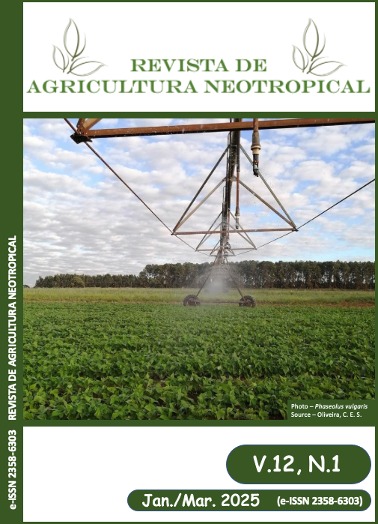BIOETHANOL FROM Musa paradisiaca WASTE AS A SUSTAINABLE ALTERNATIVE IN AMAZONAS, PERU
DOI:
https://doi.org/10.32404/rean.v12i1.9041Keywords:
Agricultural waste, Green ethanol, Renewable energyAbstract
The production of bioethanol from organic waste is a promising option for sustainability. This study evaluated the quality of bioethanol obtained from bellaco plantain (Musa paradisiaca) waste in Amazonas, Peru. A total of 45 samples were used with different waste-to-water ratios: 0.5 kg per 5.5 liters, 1 kg per 5 liters, 1.5 kg per 4.5 liters, 2 kg per 4 liters, and 2.5 kg per 3.5 liters. Fermentation was conducted for 192, 196 and 200 hours. No significant differences were observed among the analyzed waste-to-water concentrations. However, fermentation time significantly affected the alcohol content. At 192 hours, the average alcohol content was 60.69%, while at 196 and 200 hours, it was 34.64% and 44.38%, respectively. Fermentation at 192 hours resulted in a significantly higher alcohol content compared to 196 and 200 hours. These findings suggest that a 192-hour fermentation period is the most efficient for obtaining high-quality bioethanol, with potential economic and quality benefits.
References
(I) Araneda Agurto, I.D.R., Correa Garcia, C.J., Irazabal Changanaque, F. 2019. Obtención de bioetanol a partir del banano orgánico (Musa x paradisiaca) no exportable. Universidad Nacional de Piura - UNP. http://repositorio.unp.edu.pe/handle/UNP/1954.
(II) Bala Saad, A., Musa, D.D., Muhammad, F.T. 2023. Production of Bioethanol from Rotten Watermelon (Citrullus lanatus) and Banana (Musa sapientum) Using Enzymatic Approach. Sahel Journal of Life Sciences FUDMA, 1(1), 163-168. DOI: https://doi.org/10.33003/sajols-2023-0101-018.
(III) Bell, M.G., Zimmerer, K.S., Rodríguez Tinoco, O.S. 2023. Following the Water Uphill? The Spread of Blueberry Cultivation to the Mountains of Áncash, Peru / ¿Siguiendo el agua cuesta arriba? La expansión del cultivo del arándano en la sierra de Áncash, Perú. Journal of Latin American Geography. DOI: https://doi.org/10.1353/lag.0.0195.
(IV) Budiastuti, H., Zulfa, S.I., Sihombing, N., Haryadi, H., Muhari, E.H., Soeswanto, B., Widiastuti, E., Pullammanappallil, P. 2023. Effect of Fermentation Time on the Production of Ambon Banana Weevil Waste Bioethanol. Current Journal: International Journal Applied Technology Research, 4(1), 17-28. DOI: https://doi.org/10.35313/ijatr.v4i1.110.
(V) Bušić, A., Marđetko, N., Kundas, S., Morzak, G., Belskaya, H., Ivančić Šantek, M., Komes, D., Novak, S., Šantek, B. 2018. Bioethanol Production from Renewable Raw Materials and its Separation and Purification: A Review. Food Technology and Biotechnology, 56(3), 290-311. DOI: https://doi.org/10.17113/ftb.56.03.18.5546.
(VI) Cutzu, R., Bardi, L. 2017. Production of Bioethanol from Agricultural Wastes Using Residual Thermal Energy of a Cogeneration Plant in the Distillation Phase. Fermentation, 3(2), 24. DOI: https://doi.org/10.3390/fermentation3020024.
(VII) Domínguez-Bocanegra, A.R., Torres-Muñoz, J.A., López, R.A. 2015. Production of Bioethanol from agro-industrial wastes. Fuel, 149, 85-89. DOI: https://doi.org/10.1016/j.fuel.2014.09.062.
(VIII) Escalante Yaulilahua, D.A., Olivera Recuay, J.M., Miranda Galván, M.R., Venegas Rodriguez, P.B. 2023. Peruvian Agro-Export Sector: A Competitiveness Study On Their Main Products In The Period 2010-2019. Journal of Globalization, Competitiveness and Governability, 17(2). DOI: https://doi.org/10.58416/GCG.2023.V17.N2.01.
(IX) Gámez, F.J.G. 2021. Diseño de un proceso de tratamiento de 120 m3/día de aguas residuales de la industria petroquímica de producción de metanol mediante tecnología de membranas. https://riunet.upv.es/handle/10251/173871.
(X) GORE Amazonas, IIAP., 2010. Zonificación Ecológica y Económica del Departamento de Amazonas.
(XI) Im, K.H., Nguyen, T.K., Choi, J., Lee, T.S. 2016. Ethanol Production from Various Sugars and Cellulosic Biomass by White Rot Fungus Lenzites betulinus. Mycobiology, 44(1), 48-53. DOI: https://doi.org/10.5941/MYCO.2016.44.1.48.
(XII) INEI., 2022. Producción Nacional. https://www.inei.gob.pe/media/MenuRecursivo/boletines/04-informe-tecnico-produccion-nacional-feb-2022.pdf.
(XIII) Kanthavelkumaran, N., Jayaram, R.S., Prasanth, P.V. 2023. Bioethanol (Environment support fuel) production and optimization from pineapple peel and banana peel. global nest Journal, 25(9), 61-67. DOI: https://doi.org/10.30955/gnj.005251.
(XIV) Llique, R., 2011. Aramango Tierra Turística.
(XV) Magallanes Díaz, J.F., Camasi Montes, C.F., Rojas Cubas, J.C. 2023. Precios y Costo de Oportunidad de la Agricultura Comercial en el Perú 2001-2021. Anales Científicos, 84(2), 97-109. DOI: https://doi.org/10.21704/ac.v84i2.921.
(XVI) R Core Team., 2019. R: A language and environment for statistical computing. R Foundation for Statistical Computing [Vienna: R Foundation for Statistical Computing]. http://www.R-project.org.
(XVII) Rincón-Catalán, N.I., Cruz-Salomón, A., Sebastian, P.J., Pérez-Fabiel, S., Hernández-Cruz, M.D.C., Sánchez-Albores, R.M., Hernández-Méndez, J.M.E., Domínguez-Espinosa, M.E., Esquinca-Avilés, H.A., Ríos-Valdovinos, E.I., Nájera-Aguilar, H.A. 2022. Banana Waste-to-Energy Valorization by Microbial Fuel Cell Coupled with Anaerobic Digestion. Processes, 10(8), 1552. DOI: https://doi.org/10.3390/pr10081552.
(XVIII) Romo, M., Leo, Ma., Epiquién, M., 2009. Propuesta de Sistema de Conservación Regional - SICRE - Amazonas. APECO. http://www.regionamazonas.gob.pe/sicre/propuesta_tecnica/PROPUESTASICRE_9_SICRE.pdf.
(XIX) Sarkar, N., Ghosh, S.K., Bannerjee, S., Aikat, K. 2012. Bioethanol production from agricultural wastes: An overview. Renewable Energy, 37(1), 19-27. DOI: https://doi.org/10.1016/j.renene.2011.06.045.
(XX) Shitophyta, L.M., Zhirmayanti, R.S., Khoirunnisa, H.A., Amelia, S., Rauf, F. 2023. Production of Bioethanol from Kepok Banana Peels (Musa acuminata x Musa balbisiana) using Different Types of Yeast. G-Tech: Jurnal Teknologi Terapan, 7(3), 897-903. DOI: https://doi.org/10.33379/gtech.v7i3.2621.
(XXI) Walter, H., Lieth, H., 1960. Klimadiagram-Weltatlas. Gustav Fisch. https://donum.uliege.be/handle/2268.1/7079.
(XXII) Zulnazri, Z., Maulana, A., Muarif, A., Sylvia, N., Dewi, R. 2023. Production of Bioethanol from Banana Peel (Musa paradisiaca l.) Using Sulfuric Acid Catalyst. Jurnal Teknologi Kimia Unimal, 12(1), 97. DOI: https://doi.org/10.29103/jtku.v12i1.11654.
Downloads
Published
How to Cite
Issue
Section
License

This work is licensed under a Creative Commons Attribution 4.0 International License.
The authors retain the rights to the manuscripts and, therefore, are free to share, copy, distribute, perform and publicly communicate the work under the following conditions:
Acknowledge work credits in the manner specified by the author or licensor (but not in a way that suggests that you have their support or that they support their use of their work).
REVISTA DE AGRICULTURA NEOTROPICAL (ISSN 2358-6303) is under license https://creativecommons.org/licenses/by/4.0/
The State University of Mato Grosso do Sul, Sustainable Development Center of Bolsão Sul-Mato-grossense (CEDESU), of the University Unit of Cassilândia (UUC), preserves the patrimonial rights (copyright) of the published works and favors and allows their reuse under the license as mentioned above.
------------
The journal reserves the right to make normative, orthographic, and grammatical alterations in the originals, to maintain the cult standard of the language, respecting, however, the style of the authors.
Final proofs will be sent to the authors.
Published works become the property of the journal. The opinions expressed by the authors of the manuscripts are their sole responsibility.

